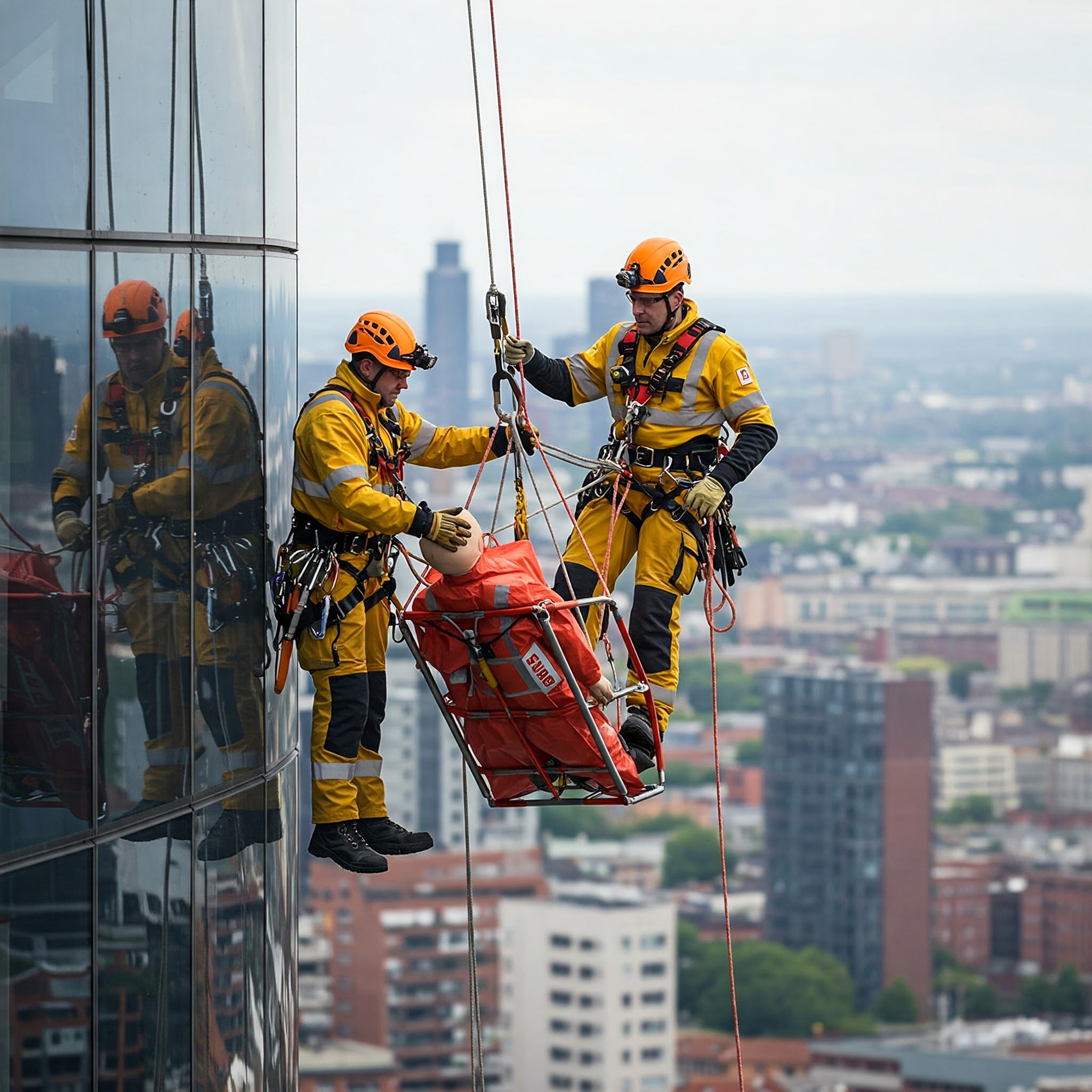Work at Height and Emergency Rescue

About Course
Overview:
This comprehensive course is designed to equip participants with the knowledge, skills, and awareness necessary for safe work at height and effective emergency rescue operations. It emphasizes OSHA compliance, risk assessment, proper use of fall protection systems, rescue techniques, and emergency response protocols. Through a blend of theory, interactive discussions, and hands-on practical sessions, participants will learn to identify hazards, select appropriate PPE, and execute rescue operations confidently and safely.
Learning Objectives:
By the end of this course, participants will be able to:
- Understand OSHA standards related to working at height (29 CFR 1910.28/.29, 1926.500).
- Identify common hazards and fragile surfaces encountered during height work.
- Recognize and perform the roles and responsibilities of authorized persons, supervisors, and rescuers.
- Conduct hazard identification and perform risk assessments for working at height.
- Select and use appropriate fall protection systems including PFAS, guardrails, and nets.
- Apply ladder and scaffold safety protocols effectively.
- Properly use PPE such as harnesses, helmets, lanyards, and self-retracting lifelines (SRLs).
- Communicate effectively during height operations and emergencies.
- Execute emergency planning and implement different types of rescue techniques.
- Demonstrate basic first aid and life support procedures during rescue operations.
Course Outline:
Module 1: Introduction to Work at Height
- Importance of safety in height-related tasks
- Common industries and applications
Module 2: OSHA Regulations
- Overview of 29 CFR 1910.28 / .29, 1926.500
- Legal responsibilities and compliance
Module 3: Types of Hazards in Height Work
- Falls from height
- Fragile surfaces and unstable platforms
- Environmental risks
Module 4: Roles & Responsibilities
- Authorized person, competent person, supervisor, rescuer
- Employer obligations
Module 5: Hazard Identification & Risk Assessment
- Risk matrix and job safety analysis (JSA)
- Control measures and documentation
Module 6: Minor Practical
- Group discussion on real-life scenarios and case studies
Module 7: Fall Protection Systems
- Guardrails, personal fall arrest systems (PFAS), safety nets
- Anchor points and connectors
Module 8: Ladder Safety & Scaffold Use
- Inspection and use of ladders and scaffolds
- Stability and secure placement
Module 9: PPE Usage
- Harness donning and fit check
- Use of lanyards, SRLs, helmets, and energy absorbers
Module 10: Effective Communication at Height
- Radio communication, hand signals
- Emergency codes and team coordination
Module 11: Minor Practical
- Hands-on review and familiarization with fall protection equipment
Module 12: Emergency Planning & Rescue
- Components of an emergency plan
- Roles in an emergency
Module 13: Types of Rescue
- Self-rescue
- Assisted rescue
- Suspended person recovery
Module 14: Rescue Equipment
- Rescue kits, winches, tripods
- Rope access and lowering systems
Module 15: First Aid & Basic Life Support (BLS)
- CPR, bleeding control, shock management
- Role of first responder
Module 16: Minor Practical
- Simulated fall arrest and rescue drill using dummy or training aid
Module 17: Course Evaluation, Certification & Closure
- Knowledge check
- Practical assessment
- Certificate distribution and feedback
Course Duration
- Total Duration:03 Day / 24 Hours
Final Exam
Comprehensive assessment covering all modules
- 20 multiple-choice questions assessing understanding of course materials
- Minimum passing score: 70%
Student Ratings & Reviews

